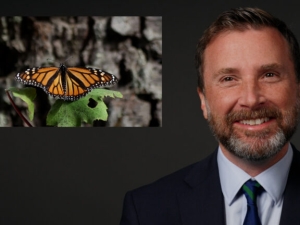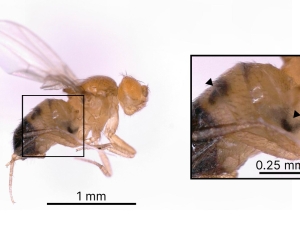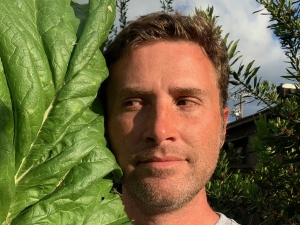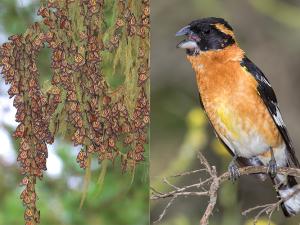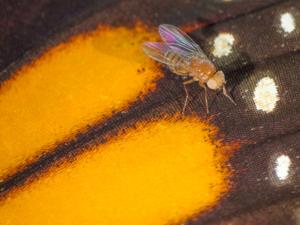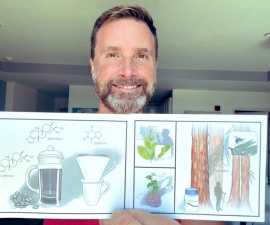

Research Bio
Noah Whiteman is Professor of Genetics, Genomics, Evolution and Development in the Department of Molecular & Cell Biology and the Department of Integrative Biology at Berkeley. His laboratory focuses on understanding why and how organisms deploy toxins as weapons that they use in offense and defense. Whiteman is co-Director of the NIH T32 Genetic Dissection of Cells and Organisms Training Program that provides training to 16 Ph.D. students in genetics from three departments at Berkeley.
Whiteman conducted his dissertation research in the Galapagos Islands on co-evolution between birds and their parasites. He then completed an NIH postdoctoral fellowship at Harvard where he began to use plants as model hosts that were attacked by diverse parasites. At Berkeley, his laboratory has focused on how plants have evolved to produce diverse toxins as defensive shields and how insects have evolved in response to resist and even sequester them. He uses genomics and genome editing as a tool to ascertain which genetic changes are responsible for these co-evolved traits. Often, his laboratory relies on the fruit fly Drosophila melanogaster and its relatives as models on the animal side of the equation. His lab is also interested in the plant side of the equation and also use the model plant Arabidopsis thaliana and other mustards as hosts of the insects. A new project focuses on the role of toxin genes captured by bacteria have been integrated into the fruit fly's innate immune system to protect it from parasitoid wasps. A smaller project focuses on interactions between hummingbirds and their nectar plants at the Rocky Mountain Biological Laboratory in Colorado.
See their latest research on how they used CRISPR-Cas9 genome editing to understand how diverse insects overcome terpenoid toxins in plants as each lineage co-evolved across the last 400 million years, how insects borrowed bacterial toxin genes to resist parasitoid wasps, and now the monarch butterfly evolved to be resistant to milkweed toxins it stores in its body:
- Nature Ecology & Evolution article about terpenoids
- Elizabeth Pennisi's story about the terpenoid research in Science
- PNAS article about insects borrowing bacterial toxins
- Nature monarch article
- Carl Zimmer’s story about the research in the NYT
Stepping back, here is the big picture take on his lab's research: Over half of all of our modern medicines are natural products. The healing plants, fungi, and even some animals from which pure drugs have been isolated were often first discovered by Indigenous peoples. The powers of these materials are communicated across the generations through oral tradition and materia medica. Curare, the first muscle relaxant used in general surgery, and cocaine, the first local anesthetic, were first discovered and used by Indigenous peoples. Wonder drugs, from aspirin (anti-inflammatory) to cephalosporins (antibiotics), and morphine (analgesic) to taxol (anti-cancer) evolved not for our benefit at all, but to protect plants and microbes from enemies as chemical defenses. Through a 2020 Guggenheim Fellowship, he has written a book to be published on October 24, 2023 on the origin of nature's toxins, how animals and humans overcome them, and how they have changed the world: https://www.hachettebookgroup.com/titles/noah-whiteman/most-delicious-poison/9780316386579/. His book provides a new lens through which to view both natural and human history as well as the biology of addiction.
Goals/Interests as an educator: To teach and mentor creative, kind, passionate, and skeptical scientists. He has a deep interest in engagement with students, and the public, on evolutionary biology and science as a way of knowing. He often shares his failures and successes as a gay, first-generation college student who grew up in rural, northeastern Minnesota.
See his lab website (www.whitemanlab.org) or his author website (www.mostdeliciouspoison.com) for more details.
Research Expertise and Interest
adaptation, evolutionary biology, genomics, genetics, toxicology, insect biology, plant biology, microbiology, CRISPR-Cas9 genome editing
In the News
Watch a Professor Explain the Evolutionary War That Gave Us Caffeine
Fly vs. Wasp: Stealing a Defense Move Helps Thwart a Predator
Nature’s Poisons: Why We Love Them and Abuse Them
What It Takes to Eat a Poisonous Butterfly
CRISPRed flies mimic monarch butterfly — and could make you vomit
Featured in the Media
Noah Whiteman, Professor of Genetics, Genomics, Evolution and Development, is a 2025 recipient of the Genetics Society of America Medal for outstanding contributions to the field of genetics.
"Many baroque chemicals we use and abuse appeared on the planet because they enhance the survival odds of the organisms that make them or absorb them through their diet or microbiome," writes Noah Whiteman, integrative biology professor.

